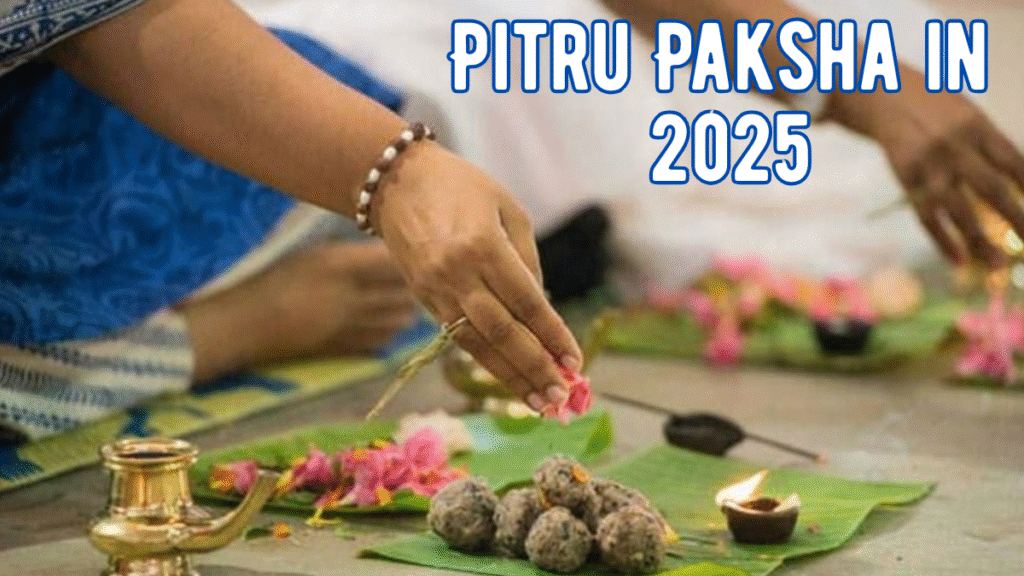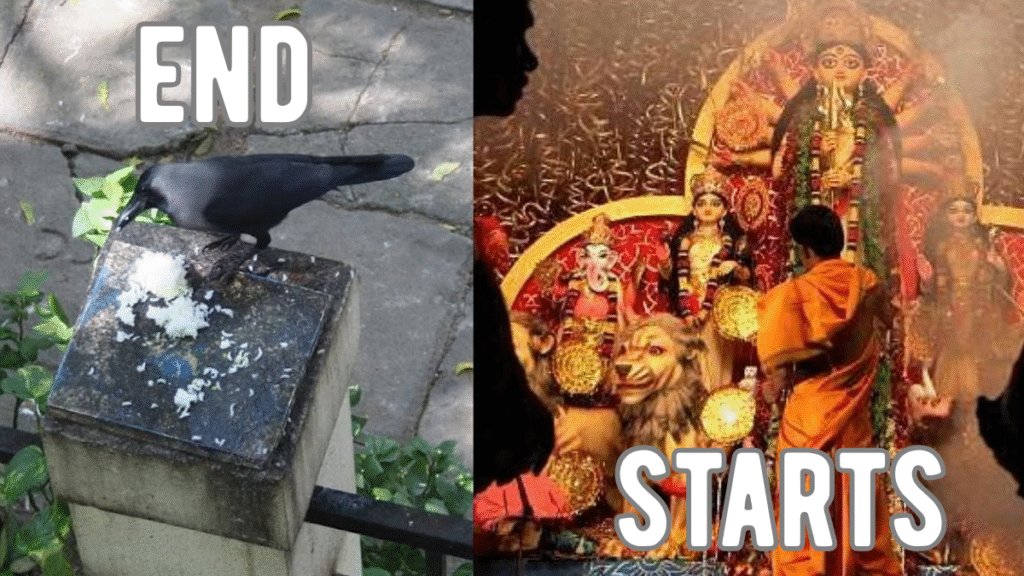Importance of Shraddha: A celebration of respect and reverence for ancestors
There is one perception in Hinduism: “Shraddhaya Kriyate Ya Sa,” i.e., paintings accomplished with reverence. Shraddha Karma is finished with this mindset. It is a religious motion through which we display recognition, love and gratitude closer to our ancestors. It isn’t simply a ritual, however, but an expression of the soulful bond that lies within us.
Shraddha is an act indicating that we’ve no longer forgotten our ancestors. It is an age-vintage sanskar in which it’s widely considered that feeding and giving water to the souls of ancestors brings them peace and salvation.
When is Pitru Paksha in 2025?

In 2025, Pitru Paksha will begin on 10 September, Saturday and will end on 25 September, Sunday. The final day of Pitru Paksha is Sarva Pitru Amavasya or Mahalaya Amavasya.
What is Pitru Paksha?
Pitru Paksha, as consistent with the Hindu calendar, is a sacred phase of 16 days, at some stage in which people perform Shraddha, Tarpan and Pinddaan for the soul’s peace of their forefathers. It is a time for reflection, reminiscence and gratitude. It is thought that the souls of our ancestors visit the earth in this period and are contented through Tarpan, Jal and Pinddaan.
This time is for rituals, yes, but also for a re-memory of our values and thanksgiving. This is the time when we recall those individuals due to whom we exist on this planet.
Mahabharat-based story: Karna and the history of Pitru Paksha
A significant Pitru Paksha story is connected with Mahabharata. When Karna was killed during the war and arrived in heaven, he was offered gems and gold jewelry as food. He was shocked to see this and inquired of Lord Indra why he was doing so.
Indra said that he has given much in his lifetime but never provided food or drink to his ancestors. Karna deeply regretted it. He wished to rectify his fault.
Lord Indra permitted him to come back to the earth for 15 days so that he could do the Shradh of his ancestors. Karna is utilized these days to give water and food to the ancestors. From then on this practice began, and this time period came to be known as Pitru Paksha.
Importance of Tarpan and Pinddaan
The most significant acts during Pitru Paksha are Tarpan and Pinddaan. Tarpan refers to giving water mixed with sesame seeds to ancestors, which provides solace to their spirits. Pinddaan, in contrast, provides balls of rice, sesame seeds and barley.
It is thought that these acts fulfill the ancestors’ souls, and they attain salvation by attaining release from the wheel of rebirth. Tarpan is not only a method of spiritual cleansing, but it is also the process through which blessings from ancestors are attained.
Scientific and spiritual basis of Shradh
One day in Pitra Lok, according to Hindu belief, is equal to one year on the earth. Thus, 15 days of Pitru Paksha are equivalent to 15 years of service. That is why the ancestors up to 15 generations are remembered and tarpan given through Shradh.
Shradh is not restricted to father or mother alone; here grandparents, great-grandparents, and even all the ancestors known and unknown are honored.
Special Bhog for Unknown Pitras
To the ancestors whose date or name is not known, “Dry Food” is oblate. It is ordinary food prepared from wheat flour, rice and seasonal vegetables, which is oblate on a leaf plate. It is also referred to as Pitru Thali.
An effort is made to please all the unknown Pitras with this kind of food so that no soul remains unhappy and they also get peace.
Other names of Pitru Paksha and regional recognition
Different names exist for Pitru Paksha in different parts of India; for example,
- Solah Shraadh
- Apara Paksha
- Kanagat (in Punjab and Haryana)
- Pitri Pokho (in Bengal)
- Jitiya (Bihar, Uttar Pradesh)
Even though the names vary, the intention remains the same—pleasure of ancestors’ souls and reverence towards them.
Importance of Shraadh Tithi
Shraadh Tithi is the date when an individual passed away. Performing their Shraadh, Tarpan and Pinddaan on the same date during Pitru Paksha is most productive. For individuals whose ancestors’ date is unknown, Shraadh is carried out on the day of Sarvapitri Amavasya.
Start of Devi Paksha

At the end of Pitru Paksha, Devi Paksha starts, i.e., the start of Sharadiya Navratri. It is the time for worship of Goddess Shakti. Thus, Pitru Paksha concludes with a spiritual vibe, which depicts peace, power and new beginnings.
Conclusion: A festival of thankfulness to ancestors
Pitri Paksha isn’t only a spiritual responsibility; it is also an emotional and cultural exercise where we recall the departed souls who provided us delivery and nurture and imparted their values. Karma, including Tarpan and Pind Daan, brings peace to the ancestors and guarantees peace and bliss inside the family.
On this Pitru Paksha, let us worship our ancestors with respect, offer our prayers for the peace in their souls, and fulfill our lives with fulfillment and prosperity with their benefits.
If you desire to apply this content as a blog or article, I can help in SEO titles, meta description and tags as well.
FAQs
What is the significance of Shradh in Hindu tradition?
Shradh is a ritual to honor and satiate ancestors, showing gratitude, love, and reverence towards one’s forefathers.
When is Pitru Paksha observed in 2025?
In 2025, Pitru Paksha begins on September 10 (Saturday) and ends on September 25 (Sunday) with Sarva Pitru Amavasya.
Why is Pitru Paksha important for Hindus?
It is a sacred period to offer prayers and food to ancestors, helping them attain peace and liberation (Moksha).
